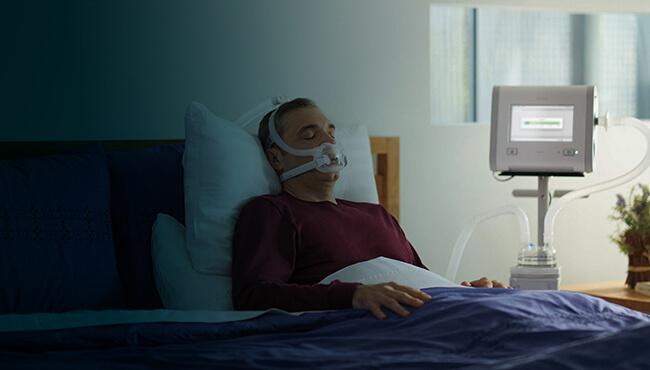Home Non-Invasive Ventilator Routine Maintenance
By Gavin | November 07, 2022
Before use: Place the machine in a dry and smoothly ventilated place, read the product instruction manual in detail, connect the ventilator, humidifier, nasal mask, or nasal mask according to the instruction manual, and adjust the pipeline (ventilator tube and oxygen tube) in different positions of supine, left side and right side respectively, to facilitate turning over and moving during sleep.

The pipeline around the head should not be left too long to prevent winding the head and neck, and the pipeline is not suitable for too short to prevent falling off. Ensure that the humidifier has been filled with pure or distilled water and cannot exceed the prescribed position, check the respirator performance and pipeline connection for correctness and tightness, and observe and check the parameter settings. Correctly master switching the machine on and off.
When using: Patients can be in semi-recumbent, sitting, or lying positions when using non-invasive ventilation, but make the head, neck, and shoulders in the same plane to effectively open the airway; remove respiratory secretions promptly, encourage patients to cough and cough up sputum to keep the respiratory tract unobstructed. First, remove excessive facial grease, then put on the nasal or mouth and nose mask. The tightness of the headband is generally appropriate for the mask to have no pressure on the corresponding part of the patient, no air leakage, and to allow the passage of 1 to 2 fingers. The respirator is most effective when the mask is well-worn and comfortable. The mouth should be closed as much as possible when using the nasal mask, and air leakage from the mouth can lead to reduced efficacy. If the mouth leak cannot be resolved, the patient should switch to an oronasal mask or use a jaw strap. When patients use the ventilator for the first time, if they feel uncomfortable, they can take several deep breaths and gradually adapt after a period of self-adjustment.
End of use: Turn off the machine and then cut off the power. Clean the water reservoir and heating plate separately when cleaning. Clean the water storage box every week. If the water storage box is used in distilled water, you can use neutral detergent to clean, rinse and dry. If the water storage box is used in tap water or mineral water (not recommended), you should use a 1:10 vinegar-water mixture (or white vinegar) soaked for several hours to remove the alkali residue inside the water storage box, rinse thoroughly with water before use. If necessary, use glutaraldehyde or send it to professional institutions for disinfection.
Precautions.
1) Make sure the equipment is not damaged in any way. The oxygen concentration of the oxygen generator used with the ventilator is maintained constant and above 90%. It is recommended to use oxygen concentrators of 5L and above. Pay attention to the different ways of accessing the oxygen tube when the ventilator is used with the oxygen generator or oxygen cylinder.
2) If you find any unexplained changes in the ventilator, such as abnormal noise, odor, casing damage, liquid immersion or wire wear, etc., stop using it immediately and send it for overhaul.
3) Before non-parallel movement of the ventilator without a water leakage prevention function, the water storage box should be emptied to prevent the backflow of wetting fluid into the central unit.
4) Parameters should be set according to the recommendations of the physician or professional, do not adjust the treatment parameters or open the housing by yourself.
5) Do not share or borrow the ventilator with others. Use one person for one line and one for one nasal/mouth-nose mask, and disinfect it regularly.
6) Pay attention to adding wetting solution during treatment to avoid damage to the machine and airway burns from dry burning.
7) Regular maintenance and overhaul by professional staff.